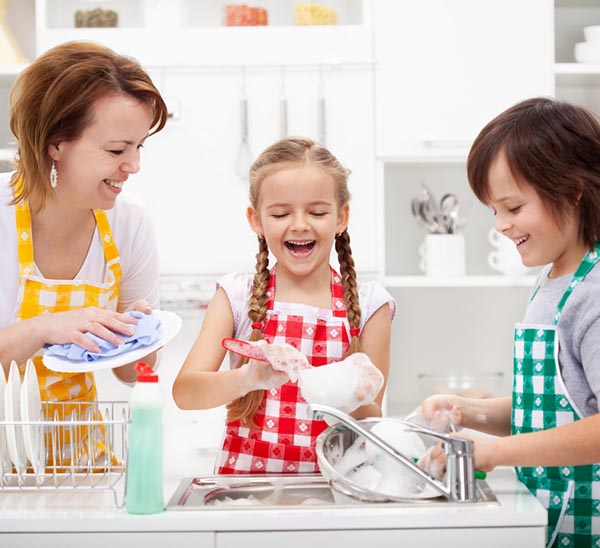What is in your dish soap??
Not in our dish soap. More Information
8 Toxic Chemicals in Conventional Dish Soap

Choosing organic produce is important, but so is making sure that the dishes you use to cook and eat aren’t washed in toxic chemicals. Here are some common bad guys to avoid and why you should give them the boot from your kitchen.
Let’s face it, doing the dishes is a part of daily life and while that may be the case, exposure to some very common and toxic chemicals shouldn’t be. When was the last time you looked at the ingredients in your dish detergent? Can you not only pronounce, but understand what each one of them is and does? Odds are you’re like me and can maybe pronounce half of them, but that’s as far as I get. To help you live a greener and healthier lifestyle we’ve come up with a list of eight ingredients (aka chemicals) you should avoid in your dish detergents.
8 Toxic Chemicals in Conventional Dish Soap
1. Phosphates
These are often used as a water-softening mineral and act as a fertilizer in water and are hazardous to consume for both ourselves and marine life. If concentrations of this type of chemical are too high in water, they can deplete oxygen levels and promote the growth of certain algae which are toxic to consume. Try switching to a brand that is phosphate free to avoid inadvertently raising the level of this chemical in our water supply.
2. Triclosan
This type of synthetic chemical is often added to dish detergents due to its antibacterial, anti-fungal and antiviral properties. This is the chemical that often qualifies a cleaner as “antibacterial”. However, this chemical is hazardous to our hormones and disrupts our body’s natural thyroid and endocrin systems. This chemical is also often attributed to the growth of “superbugs” since it bioaccumulates in the human body.
Related: Harmful Hand Soap Ingredient Contaminates Soil; Make Triclosan-Free Hand Sanitizer From Apple Cider Vinegar
3. SLS (sodium lauryl sulfate)/SLES (sodium laureth sulfate)
This type of chemical is what gives your dish detergent its foamy property and allows it to cut through grease. While the bubbles are nice to see, they aren’t nice to absorb. This chemical absorbs through your skin and can lead to 1,4-dioxane contamination. It’s also been known to cause rashes and allergic reactions.
4. Fragrance
Any given fragrance mixture can contain up to 3,000 chemicals. Which, over time can coat themselves onto plates, forks, cups etc. and eventually be ingested. We recommend going with a dish detergent that gets its fragrance from natural essential oils.
5. DEA (diethanolamine), MEA (monoethanolamine), TEA (triethanolamine)
These chemicals have been found to disrupt hormones in the human body and are known for creating nitrates and nitrosamines. There is also a risk of developing 1,4-dioxane contamination if you’re regularly exposed to these types of chemicals.
6. Chlorine
Also known as sodium dichloroisocyanurate, this chemical has ben listed on both the EPA’s Community Right-To-Know list and the 1990 Clean Air Act. It is extremely toxic to fish and releases chlorine into the air when it’s being used to clean your dishes.
7. Formaldehyde
This chemical is a known carcinogen and might appear on your detergent label as methanol, methyl aldehyde and methylene oxide. It’s added to detergents along with preservatives so that overtime it is slowly released as a preventative to bacterial contamination. However, concentrations of this chemical are toxic within the human body.
8. Ammonia
This chemical is extremely toxic and should be avoided. Many people aren’t aware that ammonia, even if in “trace” amounts, is present in their dish detergents. If combined with bleach to create a cleaning solution, the two will release fumes that can cause damage to your eyes, respiratory tract and skin.
So, if you’re convinced that your current dish detergent just won’t work for you anymore, try switching to this at home recipe. You can also avoid adding chemicals to the water system by using this natural drain cleaner or skip the chemicals all together by using a sink plunger!
Syndicated with permission from Green Living Ideas.
Image: Washing Dishes photo via Shutterstock
Comments
Post a Comment